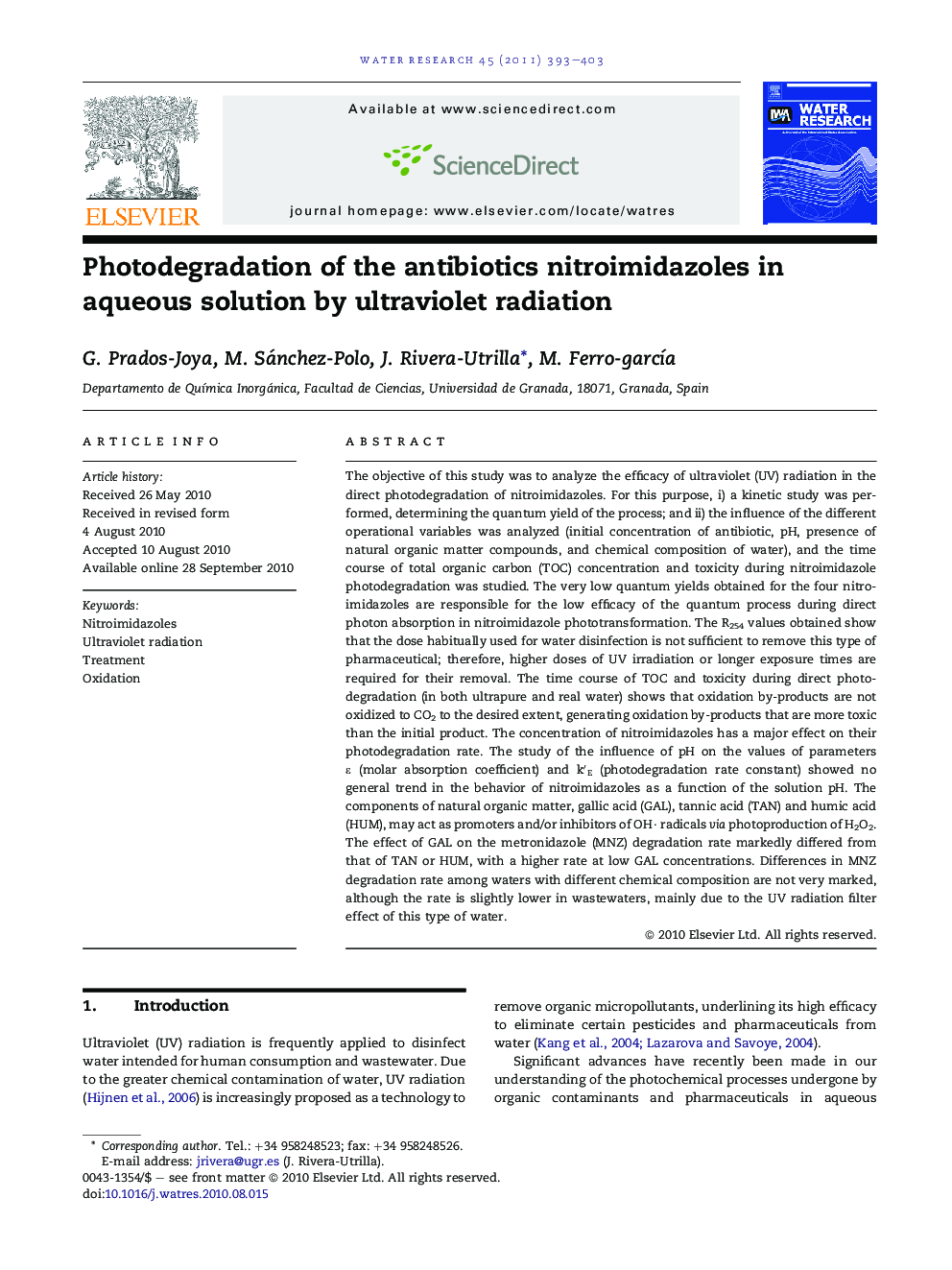| کد مقاله | کد نشریه | سال انتشار | مقاله انگلیسی | نسخه تمام متن |
|---|---|---|---|---|
| 4482103 | 1316847 | 2011 | 11 صفحه PDF | دانلود رایگان |

The objective of this study was to analyze the efficacy of ultraviolet (UV) radiation in the direct photodegradation of nitroimidazoles. For this purpose, i) a kinetic study was performed, determining the quantum yield of the process; and ii) the influence of the different operational variables was analyzed (initial concentration of antibiotic, pH, presence of natural organic matter compounds, and chemical composition of water), and the time course of total organic carbon (TOC) concentration and toxicity during nitroimidazole photodegradation was studied. The very low quantum yields obtained for the four nitroimidazoles are responsible for the low efficacy of the quantum process during direct photon absorption in nitroimidazole phototransformation. The R254 values obtained show that the dose habitually used for water disinfection is not sufficient to remove this type of pharmaceutical; therefore, higher doses of UV irradiation or longer exposure times are required for their removal. The time course of TOC and toxicity during direct photodegradation (in both ultrapure and real water) shows that oxidation by-products are not oxidized to CO2 to the desired extent, generating oxidation by-products that are more toxic than the initial product. The concentration of nitroimidazoles has a major effect on their photodegradation rate. The study of the influence of pH on the values of parameters ɛ (molar absorption coefficient) and k′E (photodegradation rate constant) showed no general trend in the behavior of nitroimidazoles as a function of the solution pH. The components of natural organic matter, gallic acid (GAL), tannic acid (TAN) and humic acid (HUM), may act as promoters and/or inhibitors of OH· radicals via photoproduction of H2O2. The effect of GAL on the metronidazole (MNZ) degradation rate markedly differed from that of TAN or HUM, with a higher rate at low GAL concentrations. Differences in MNZ degradation rate among waters with different chemical composition are not very marked, although the rate is slightly lower in wastewaters, mainly due to the UV radiation filter effect of this type of water.
Journal: Water Research - Volume 45, Issue 1, January 2011, Pages 393–403